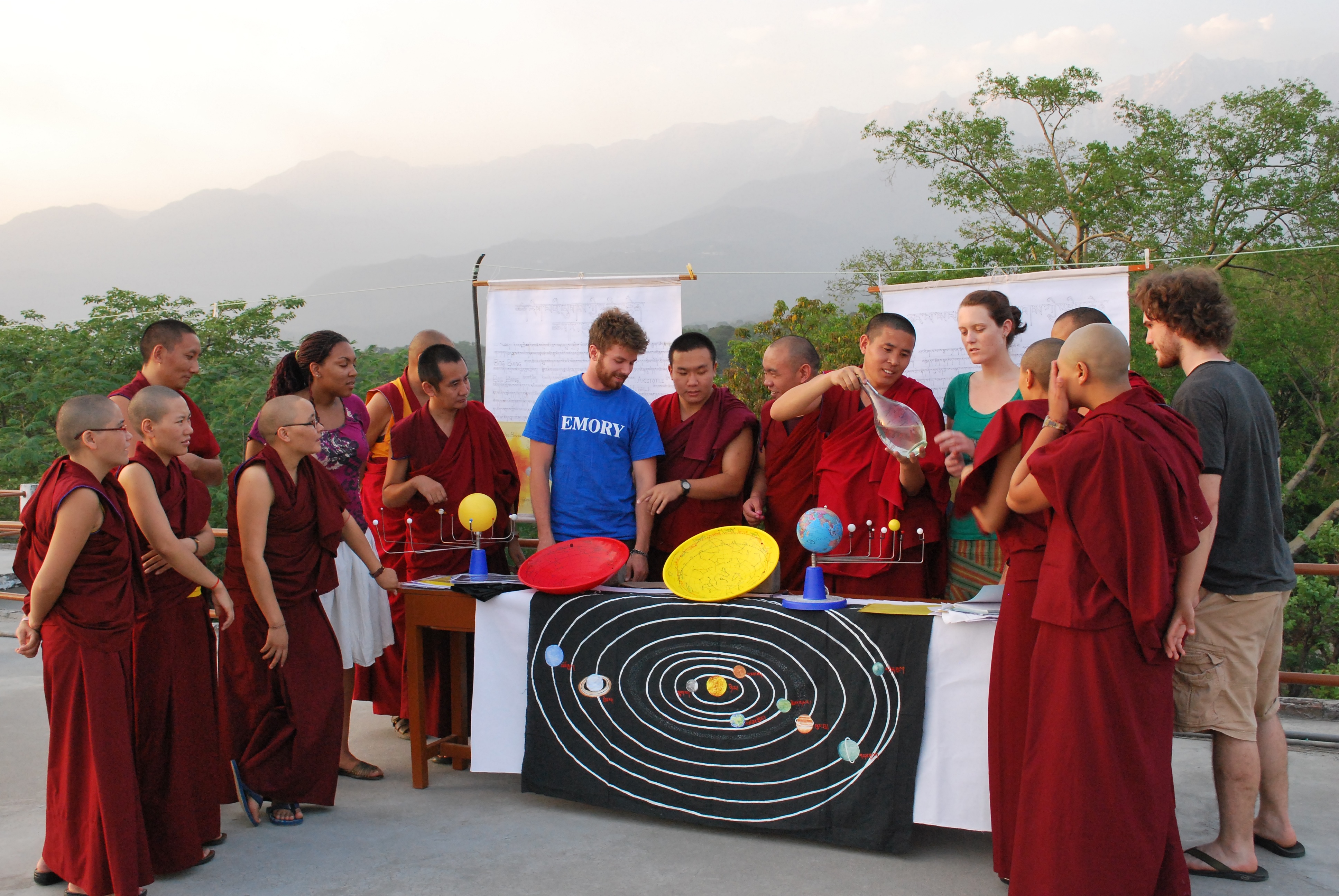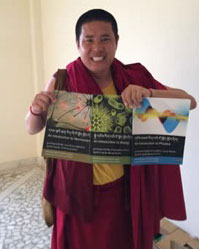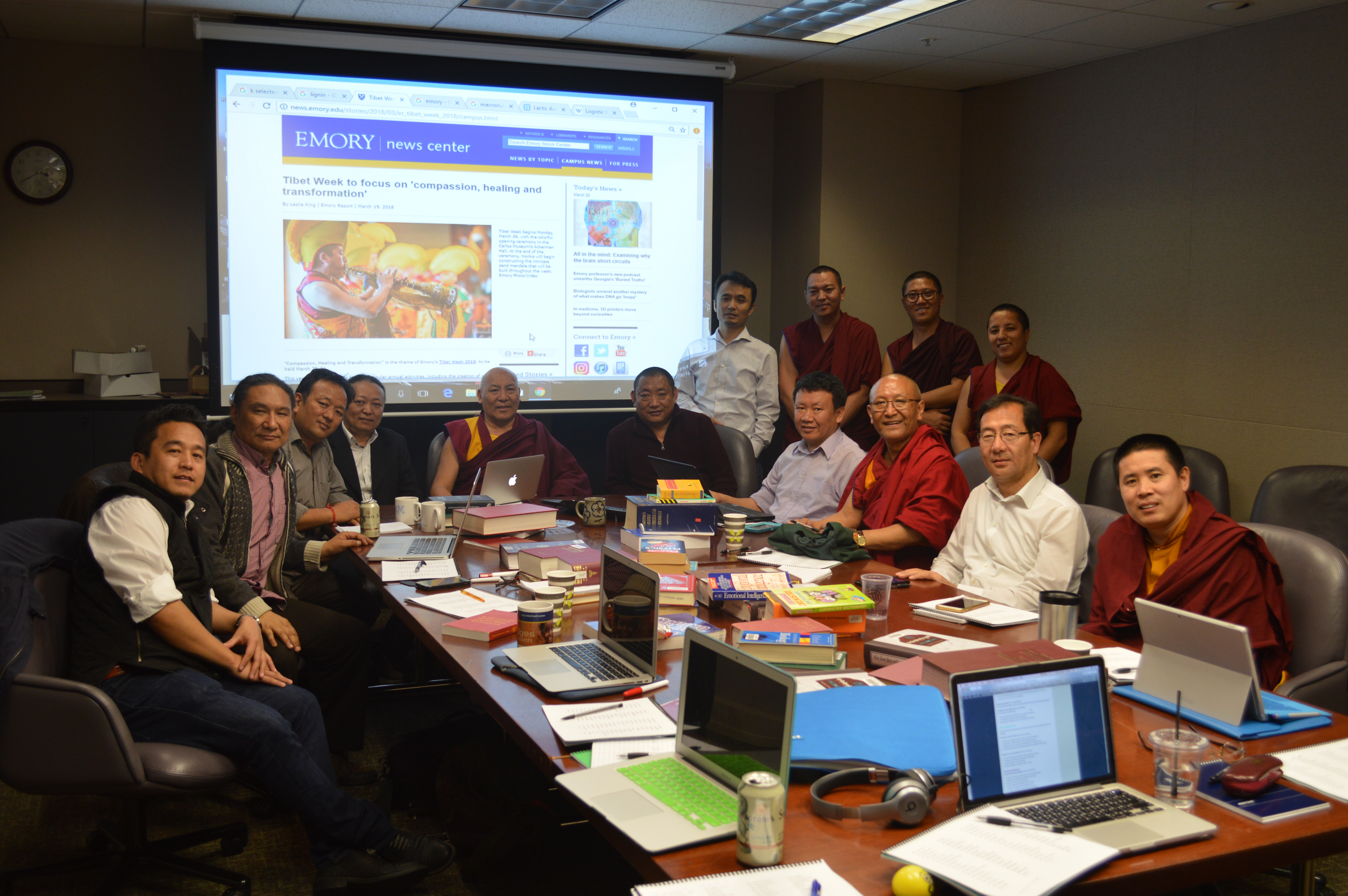Beginning in 2006, for almost two years, a group of faculty at Emory University met regularly to develop a plan, which was presented to His Holiness the Dalai Lama for his approval when he visited Emory in Fall, 2007. To facilitate the planning efforts, in addition to the science education experts at Emory, a number of scholars with expertise in the intersection of science and Tibetan Buddhism, including Dr. Georges Dreyfus, Dr. Thupten Jinpa, Dr. Alan Wallace, and Geshe Lhakdor were invited to consult on the project. This constituted the "planning phase," of ETSI, the outcome of which was an initial curricular plan.
PILOT PHASE (2008-2013)
With the approval of the plans, a pilot program was started, in collaboration with the Library of Tibetan Works and Archives (LTWA) in the summer of 2008 in Dharamsala, India where a select group of monastic students were provided science education based on the newly developed pilot curriculum. Science faculty from Emory and other institutions traveled to College of Higher Tibetan Studies (popularly known as Sarah College) in Dharamsala each summer, from 2008 to 2013, to offer month-long intensive sessions to ninety-one Tibetan Buddhist monks and nuns that comprised two cohorts, one year apart. The monastic students were drawn from twenty-two monastic institutions representing all the four major schools of Tibetan Buddhism–Gelug, Sakya, Nyingma, and Kagyu–as well as Bon. The first cohort completed the five-year curriculum and graduated from the program in the summer of 2012, and the second cohort graduated in the summer of 2013.
IMPLEMENTATION (2014-2019)
Summer 2014 marked the beginning of ETSI’s implementation phase. That summer, ETSI started introducing the six-year curriculum in philosophy of science, physics, neuroscience, and biology at three major Tibetan monastic universities located in southern India. This phase was comprised of several components, including summer intensives, year-round study, development of distance-learning materials and tools, and further curriculum refinement successfully, and it successfully established science education as part of the core curriculum of the partnering monasteries. The number of students in the program grew from 345 in 2014 to 1496 in 2019—roughly equivalent in population size to a small liberal arts college, with the challenges to match, such as the recruitment of faculty to fill the 114 teaching positions needed in 2019.
During this phase, ETSI completed the full development of the science curriculum, publication of the 19 bilingual primers, unpacking of the contents, and production of a complete set of lecture videos taken during the summer intensives. In the final year of this phase, the first group of monastic students, numbering over 233, graduated from the 6-year ETSI science curriculum, many of whom would participate in ETSI’s next phase—the Sustainability Phase.



 ETSI
ETSI


